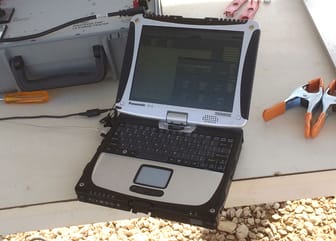APPLE M1 CHIP VS INTEL: If in 2020 you went out and spent a small fortune on an Intel-based MacBook Pro, you might be pulling hair out with Apple’s move to the M1 silicon CPU in 2021:
And with Apple’s move to their own chipset now complete across their iMac, MacBook Pro, Mini Mac, and MacBook Air models – where does the Intel-based MacBook Pro stand?
CHECK OUT: 3 Cheap iMac Deals Available Right Now On Amazon
The M1 Story So Far
After Apple announced M1 Silicon CPUs, the Apple MacBook 13-inch was the first variant to get shifted to the new architecture:
However, the last Intel MacBook 13-inch was a superb model in terms of performance; so Apple decided only to change the chipset while retaining everything else.
And despite the M1 CPU bringing more cores and efficiency with the Arm-based chip to the 13-inch MacBook Pro base model, Apple continues to sell a higher-end Intel inside MacBook Pro.
For non-tech-minded people, it might be confusing as to which is the best Apple MacBook to buy. Especially as the higher-end Intel model is more pricey on the Apple site:
So, do you go for the latest Apple laptop or opt for an Intel-inside option?
(Picking up a refurbished Intel MacBook Pro or a second-hand eBay bargain is a great way to cut costs as people jump ship from Intel to M1 models).
CHECK OUT: Asus Zenbook Pro Duo UX582 Review – Built For Creatives
Processor Performance: M1 UMA vs. Intel CPU
The last batch of 13-inch MacBook Pro laptops used 10th-generation Intel Core processors. They came in different speeds, the default configuration used a 2.0 GHz quad-core Core i5 processor and a 2.3 GHz quad-core i7 chip:
Both Intel models were more than capable of doing day-to-day tasks with ease.
On the other hand, the M1 features an 8-core CPU with an integrated 8-core GPU. The CPU contains four high-efficiency cores and four high-performance cores. With these cores, you can multitask at higher performance speeds when running apps that need maximum performance.
RELATED: 13-inch Apple MacBook Pro with M1 chip, 16gb RAM, 256gb SSD storage, for under $1,500 on Amazon.
And like with the Intel models, day-to-day work tasks, like checking email or managing your calendar won’t consume all eight cores simultaneously.
In summary, the M1 chip in the entry-level MacBook Pro offers single-core performance outperforms the Intel-based MacBook Pro. The question is, how much power do you need for the tasks you’re doing?
If rendering, editing video, large image manipulation, simulations, etc., the M1 wins.
Performance With RAM:
Basically, the Intel MacBook 13 boasts 32 GB RAM in the higher-end model, with a base model of 16 GB. And, the M1 MacBook maxes out at 16 GB, with a base model of 8 GB.
The non-techie consumer will always conclude, the more RAM, the better performance. But the performance criteria are different in this case.
If we look a little deeper, we get to know that Apple uses (UMA) Unified Memory Architecture (just like Intel’s Ice Lake or Tiger Lake). It allows the CPU to handle more processes and make a memory combination pool from the GPU and CPU to reduce bottlenecks and provide significant performance:
So, despite the base model M1 MacBook Pro 13 only having 8 GB of RAM, the UMA technology improves the performance.
To make it simpler, YouTuber Max Tech tested two M1 MacBook 13 – one 8 GB variant and the other 16 GB variant. After various stress and performance tests, he came up with the conclusion that the 8 GB M1 model is equivalent to the 16 GB Intel model. And that, the 16 GB M1 variant equals 32 GB Intel MacBook 13.
Therefore, the M1 is a clear winner. Yet, best doesn’t mean it is the best value for you. A 16 GB Intel-based MacBook Pro at a bargain price on eBay could be plenty for you. It all depends on how you’ll be using it.
CHECK OUT: The Most Expensive Gaming PCs Right Now
Apple M1 MacBook Pro vs. Intel MacBook Pro (13-Inch) Key Differences:
Apple M1 MacBook Pro 13-inch:
- 8-core Apple M1 chip 8-core GPU and 16-core Neural Engine
- Up to 16GB UMA
- Supports up to 2TB storage
- Excellent Battery life up to 20 hours {58.2-watt-hour lithium-polymer battery
- Strong Wi-Fi 6
- Two Thunderbolt / USB 4 ports
- Supports one external display with up to 6K
Apple Intel MacBook Pro 13-inch:
- Quad-core Intel Core i5 or Intel Core i7 with Intel Iris Plus graphics
- 16GB or 32GB RAM
- Supports up to 512GB, 1TB, 2TB, 4TB
- 10 hours battery life {58.0-watt-hour lithium-polymer battery}
- Strong Wi-Fi 6
- Four Thunderbolt 3 (USB-C) ports
- Up to two external 4K displays
Conclusion:
In summary, Apple’s M1 chip, even in their entry-level MacBook Pro offers performance better than an Intel-based system. Yet, do you need that performance?
If your MacBook Pro usage is just replying to emails, writing blogs, streaming Netflix, et al, pick up a bargain-priced Intel for a ridiculously low price. On eBay and Amazon right now you’ll find deals at $500 for 2019 models:
Simply put, unless you need the power, pick up a bargain.
More About:Technology Trivia

